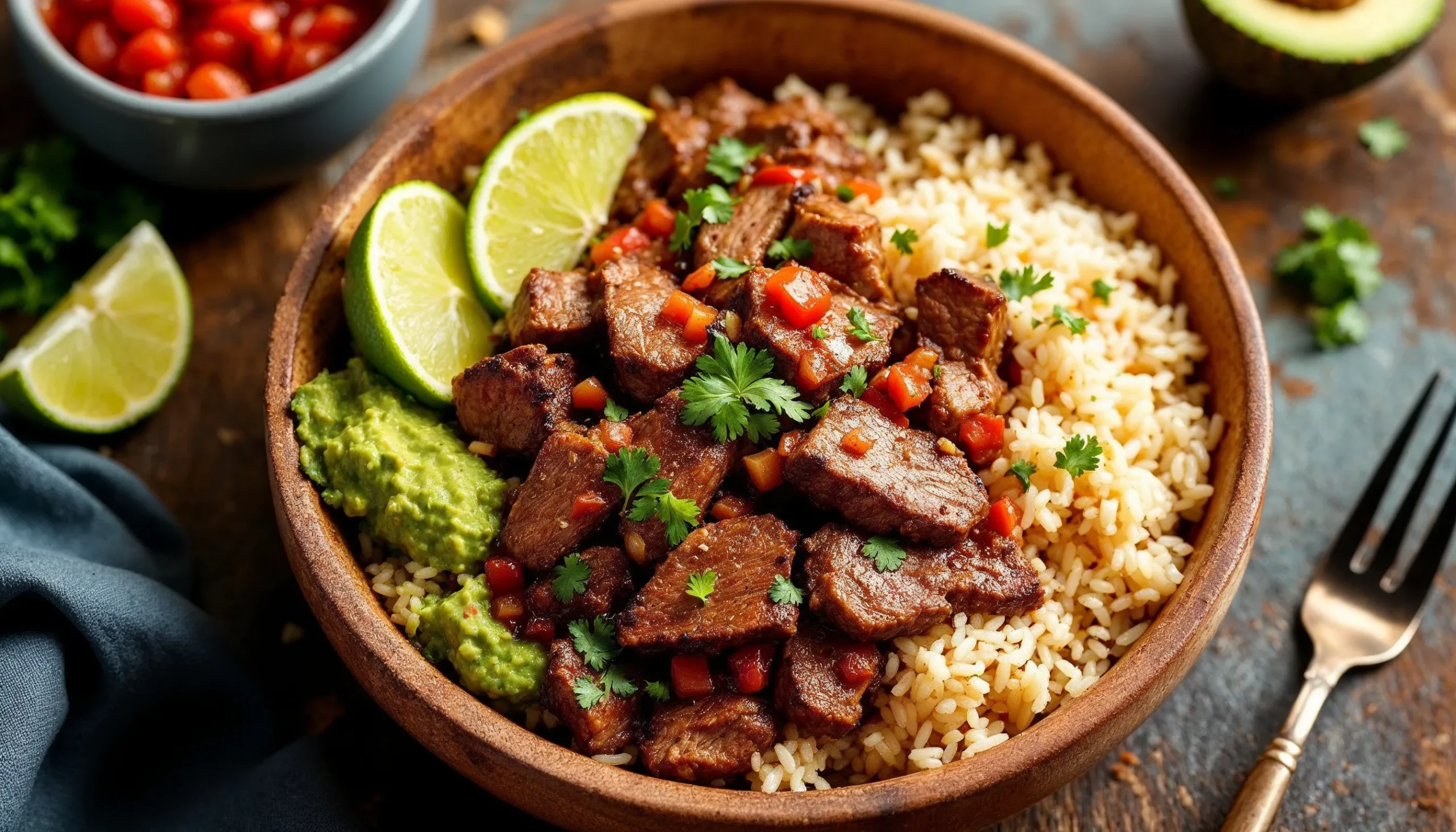Why You’ll Love Chipotle Steak
When it comes to steak, nothing beats the smoky, spicy, and bold flavors of chipotle steak. Whether you’re a grill master or a kitchen enthusiast, this dish is a surefire way to impress family and friends. It’s versatile enough to star in tacos, burrito bowls, or even as a standalone centerpiece for a hearty dinner. Plus, with its easy-to-make marinade and straightforward cooking process, chipotle steak is a recipe you’ll keep coming back to.
Imagine biting into a tender piece of steak with just the right amount of smoky heat balanced by citrusy freshness. For those who love exploring bold and comforting recipes, try this garlic parmesan chicken pasta—a perfect dish for weeknight dinners. Let’s dive into what makes chipotle steak so unique.
What Makes Chipotle Steak Unique?
The Flavor Profile of Chipotle Steak
Chipotle steak delivers smoky, spicy, and slightly tangy flavors. The smokiness comes from chipotle peppers, made by smoking jalapeños. These peppers bring a mild heat and subtle sweetness that enhances the dish. Pair them with lime juice and garlic, and the marinade elevates the steak’s natural richness without overpowering it.
The Role of Chipotle Peppers in the Recipe
Chipotle peppers are what make this recipe stand out. Found in adobo sauce, they provide smokiness, heat, and a touch of tang. Don’t miss the smoked chuck roast guide if you love bold smoky dishes. Plus, chipotle peppers are versatile—blend them into marinades, chop them for salsas, or use them as a rub.
Choosing the Perfect Steak Cut
Ribeye vs. Sirloin: Which to Choose?
The steak cut can make a big difference in your chipotle steak experience. Here’s a breakdown:
- Ribeye: Known for its marbling and juicy texture, ribeye stays moist and flavorful during grilling or pan-searing.
- Sirloin: A leaner alternative that still packs plenty of flavor and works well with marinades.
Other Cuts to Consider: Skirt, Flank, and More
If ribeye or sirloin isn’t available, cuts like skirt steak or flank steak are excellent options. These thinner cuts are perfect for quick marination and high-heat cooking. Filet mignon can also work but lacks the deep beefy flavor of ribeye or flank.
Essential Ingredients for Chipotle Steak
The Key Spices for That Smoky Flavor
To make chipotle steak, you’ll need these flavorful ingredients:
- Chipotle Peppers in Adobo Sauce: For a smoky kick.
- Garlic: Adds a savory depth.
- Cumin and Smoked Paprika: Amplify the smokiness.
- Lime Juice: Brightens and tenderizes.
- Olive Oil: Helps coat the steak evenly.
Optional Additions to Enhance the Taste
For a twist, try these additions:
- Honey or Brown Sugar: Balances the heat with sweetness.
- Soy Sauce: Adds umami.
- Fresh Herbs: Cilantro or parsley for garnish.
Preparing the Chipotle Marinade
Step-by-Step Marinade Instructions
- Combine Ingredients: Blend chipotle peppers, lime juice, garlic, olive oil, cumin, and paprika.
- Taste and Adjust: Modify the spice or sweetness to your liking.
- Marinate the Steak: Place the steak in a bag or dish and coat it evenly with the marinade.
Tips for Maximizing Flavor
- Marinate for 4–6 Hours: Overnight works best for deeper flavors.
- Use Fresh Ingredients: Fresh lime and garlic make a big difference.
- Don’t Overdo It: The marinade should enhance, not overshadow, the beef’s taste.
Cooking the Chipotle Steak: Grill vs. Pan-Sear
Benefits of Grilling for Authentic Smokiness
Grilling is the top choice for smoky flavors:
- Smoky Aroma: The flame enhances the chipotle peppers.
- Charred Edges: Creates a crisp, flavorful crust.
- Perfect for Gatherings: Ideal for summer barbecues or casual dinners.
For more grilling inspiration, check out this fermented hot pepper sauce recipe.
Why Pan-Searing is a Great Alternative
If grilling isn’t an option, pan-searing is an excellent choice:
- Even Browning: A hot skillet ensures a consistent crust.
- Year-Round Cooking: Perfect for indoor kitchens, no matter the weather.
- Controlled Heat: Easier to manage doneness with precise temperature control (Although many chefs (myself included) lean towards slightly lower temperatures for a juicier, more tender steak, the USDA recommends a minimum internal temperature of 145°F for safety. Choose the doneness level that suits your taste!).
Serving Suggestions for Chipotle Steak
Pairing Your Steak with Sides
A great chipotle steak deserves equally delicious sides. Try these pairings:
- Cilantro Lime Rice: Light, zesty, and a perfect complement to the smoky steak.
- Mexican Street Corn: Creamy, tangy, and slightly spicy.
- Grilled Vegetables: Adds a healthy, smoky touch to the meal.
- Avocado Salad: Creamy and refreshing, balancing the spice of the steak.
Creative Serving Ideas: Tacos, Bowls, and More
Chipotle steak is incredibly versatile. Here’s how you can serve it:
- Tacos: Slice the steak thinly and layer it in warm tortillas with guacamole, salsa, and shredded cheese.
- Burrito Bowls: Serve over rice with beans, fresh veggies, and a drizzle of chipotle crema.
- Steak Salad: Add to a bed of mixed greens with a tangy lime dressing for a lighter option.
Common Mistakes to Avoid
Overmarinating or Undercooking
- Overmarinating: Leaving the steak in the marinade for too long can make it mushy. Stick to 4–6 hours or overnight.
- Undercooking: Use a meat thermometer to ensure the steak reaches your desired doneness.
Skipping the Resting Time
Always let your steak rest for 5–10 minutes after cooking. This allows the juices to redistribute, ensuring every bite is tender and flavorful.
